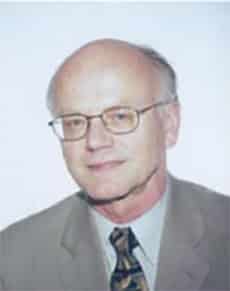Biography
Marian W. Pospieszalski was awarded the M.Sc. and D.Sc. degrees in electrical engineering from the Warsaw Institute of Technology, Warsaw, Poland, in 1967 and 1976, respectively.From 1967 to 1984 Dr. Pospieszalski was with the Institute of Electronics Fundamentals, WarsawUniversity ofTechnology (WUT), during whichtime he heldvisitingpositions with the Electronics Research Laboratory, University of California at Berkeley (1977 1978), the National Radio Astronomy Observatory (NRAO), Charlottesville, VA (1978 1979), and the Department of Electrical Engineering, University of Virginia, Charlottesville VA (1982-1984). Since 1984, he has been with the NRAO Central Development Laboratory, presently as Scientist with a Continuing Appointment. While on leave during 2001-2002, Dr. Pospieszalski was Chief Scientist-Microwave at Inphi Corporation, Westlake Village, CA, a company working on high-speed circuits. His research interests are in the fields of microwave, millimeter-wave, and high-speed circuits and systems. At WUT, in addition to the development of undergraduate and graduate courses in electronic circuits, microwave circuits and radiometry, Dr. Pospieszalski carried out research on dielectric resonators and their applications. During this period developed methods of analysis of dielectric resonators and demonstrated some of the earliest applications of dielectric resonators in microwave oscillators and filters. At NRAO, Dr. Pospieszalski has been involved with the theory and design of low-noise devices, amplifiers, and receivers with emphasis on the properties of field-effect transistors (FETs) at cryogenic temperatures. This work has resulted in the lowest noise HFET amplifiers and receivers ever reported in the 1 to 120 GHz range. It has also led to a much improved understanding of the noise properties of HFET’s and the design of amplifiers with optimal noise/bandwidth performance. Pospieszalski’s noise model is now in wide use, and his amplifier designs are used at many radio astronomy and research institutions worldwide: Very Large Array (VLA), Very Large Baseline Array (VLBA), Green Bank Telescope (GCBT), Microvvave Anisotropy Probe (MAP) Satellite, Cosmic Background Imager (CBI), Degree Angular Scale Interferometer (DASI), Very Small Array (VSA), Atacama Large Millimeter Array (ALMA), Owens Valley Radio Observatory and others. Dr. Pospieszalski has authored or co-authored over eighty journal and conference papers. He has been a member of the IEEE Transaction on Microwave Theory and Techniques (MTT) Editorial Board since 1987, and a member of the IEEE MTT Society Technical Committee on Microwave Low-Noise Techniques since 1992, serving as
Chair of that Committee from 2001-2004. Also, he has been a member of the Technical Program Committee of the International Microwave Symposium since 1992, a member of URSI Commissions D and J and has served as reviewer for many journals. In 1977, Dr. Pospieszalski received the Award of Minister of Science, Technology and Higher Education (Poland) for scientific achievements. In 1992, he was elected Fellow ofIEEE. In 2002, he received the NRAO Distinguished Performance Award, and in 2005 the Distinguished MIKON Contributor Award (International Conference on
Microwaves, Radar and Wireless Communications, Poland).
Presentations
Ultra Low Noise, InP Field Effect Transistors Radio Astronomy Receivers: State -of-the - Art
Over the last quarter century progress in the noise performance of FET and HFET amplifiers at cryogenic temperatures was quite dramatic. The achievable noise temperatures at particular frequencies were lowered by an order of magnitude and the useful frequency range of cryogenic HFET receivers was extended by about an order of magnitude up to 120 GHz.
Noise and signal properties of heterostructure field effect transistors at cryogenic temperatures
Design and examples of realizations of wideband, low-noise, cryogenically-coolable HFET amplifiers in the 3 to 120 GHz range
Examples of realization of receivers for interferometric arrays
Examples of realization of very broadband continuum radiometers
Thoughts on future developments in low-noise amplifier technology and the possible new applications of this technology will be offered. A more detailed summary of this talk is available on request.
Noise and signal properties of heterostructure field effect transistors at cryogenic temperatures
Design and examples of realizations of wideband, low-noise, cryogenically-coolable HFET amplifiers in the 3 to 120 GHz range
Examples of realization of receivers for interferometric arrays
Examples of realization of very broadband continuum radiometers
Thoughts on future developments in low-noise amplifier technology and the possible new applications of this technology will be offered. A more detailed summary of this talk is available on request.
